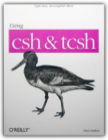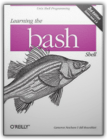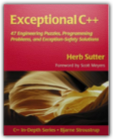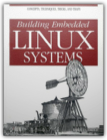|
Using csh & tcsh

Learning the bash Shell: Unix Shell Programming

As any good programmer knows, the first thing users of the Linux operating system come face to face with is the shell the UNIX term for a user interface to the system. In other words, it's what lets you communicate with the computer via the keyboard and display. Mastering the bash shell might sound fairly simple but it isn't. In truth, there are many complexities that need careful explanation, which is just what "Learning the bash Shell" provides. If you are new to shell programming, the book provides an excellent introduction, covering everything from the most basic to the most advanced features. And if you've been writing shell scripts for years, it offers a great way to find out what the new shell offers. "Learning the bash Shell" is also full of practical examples of shell commands and programs that will make everyday use of Linux that much easier. With this book, programmers will learn: How to install bash as your login shell The basics of interactive shell use, including UNIX file and directory structures, standard I/O, and background jobs Command line editing, history substitution, and key bindings How to customize your shell environment without programming The nuts and bolts of basic shell programming, flow control structures, command-line options and typed variables Process handling, from job control to processes, coroutines andsubshells Debugging techniques, such as trace and verbose modes Techniques for implementing system-wide shell customization and features related to system security Integrated Circuit 555 Projects

C Pocket Reference

Commodity Derivatives: Markets and Applications

Using structures unique to the individual market, each chapter includes an explanation of the commodity and an analysis of its physical market, discussion on the typical patterns of demand and supply and the main factors that will influence the price of the commodity, and the main products. Each chapter focuses on how the products could be used along the physical supply chain and seeks to identify the main market risks and how they can be hedged. The book then brings into perspective how the structuring banks hedge their own resultant exposure and examines the attraction of OTC investment structures for the wholesale market. Commodity Derivatives: Markets and Applications is essential reading for those wishing to learn about the main features of the commodity markets, the mechanics of derivatives, and how they are applied. Exceptional C++: 47 Engineering Puzzles, Programming Problems, and Solutions

Based on the author's Guru of the Week Web column, this book poses a series of challenging questions on the inner workings of C++, centering around generic programming with the Standard Template Library (STL), exception handling, memory management, and class design. Even if you think you know C++ well, most of these problems will teach you something more about the language and how to write more robust classes that are "exception safe" (meaning they don't throw any handled exceptions or leak resources). Don't think this is just "language lawyering," though. The author's explanations stress sound programming principles (favoring simplicity) and idioms (such as the Pimpl idiom for class design that promotes faster compile times and better maintainability, or using "smart" auto_ptrs with STL.) Judging from the range and depth of these examples, Sutter's command of the inner workings of C++ is impressive, and he does an excellent job of conveying this expertise without jargon or a lot of theory. After reading this book, C++ designers will learn several "best practices" of how to write robust, efficient classes that are "exception safe." Chances are you'll gain a better understanding of memory management techniques and working with STL too. For the experienced developer seeking leading-edge knowledge of some of the best ways to use C++, Exceptional C++ is both a challenging and truly worthwhile source of information. —Richard Dragan Topics covered: Advanced C++ programming tutorial, generic programming, tips for string classes, containers and STL, temporary objects, exception-safe code tutorial, virtual functions, class inheritance, the Pimpl idiom, namespaces, memory management, C++ memory areas, overloading new and delete, using smart pointer with auto_ptr, using const, casts, and hints for better performance and code maintainability. Building Embedded Linux Systems

|


Rob Schofield
Collection Total:
266 Items
266 Items
Last Updated:
Aug 9, 2013
Aug 9, 2013
 Made with Delicious Library
Made with Delicious Library